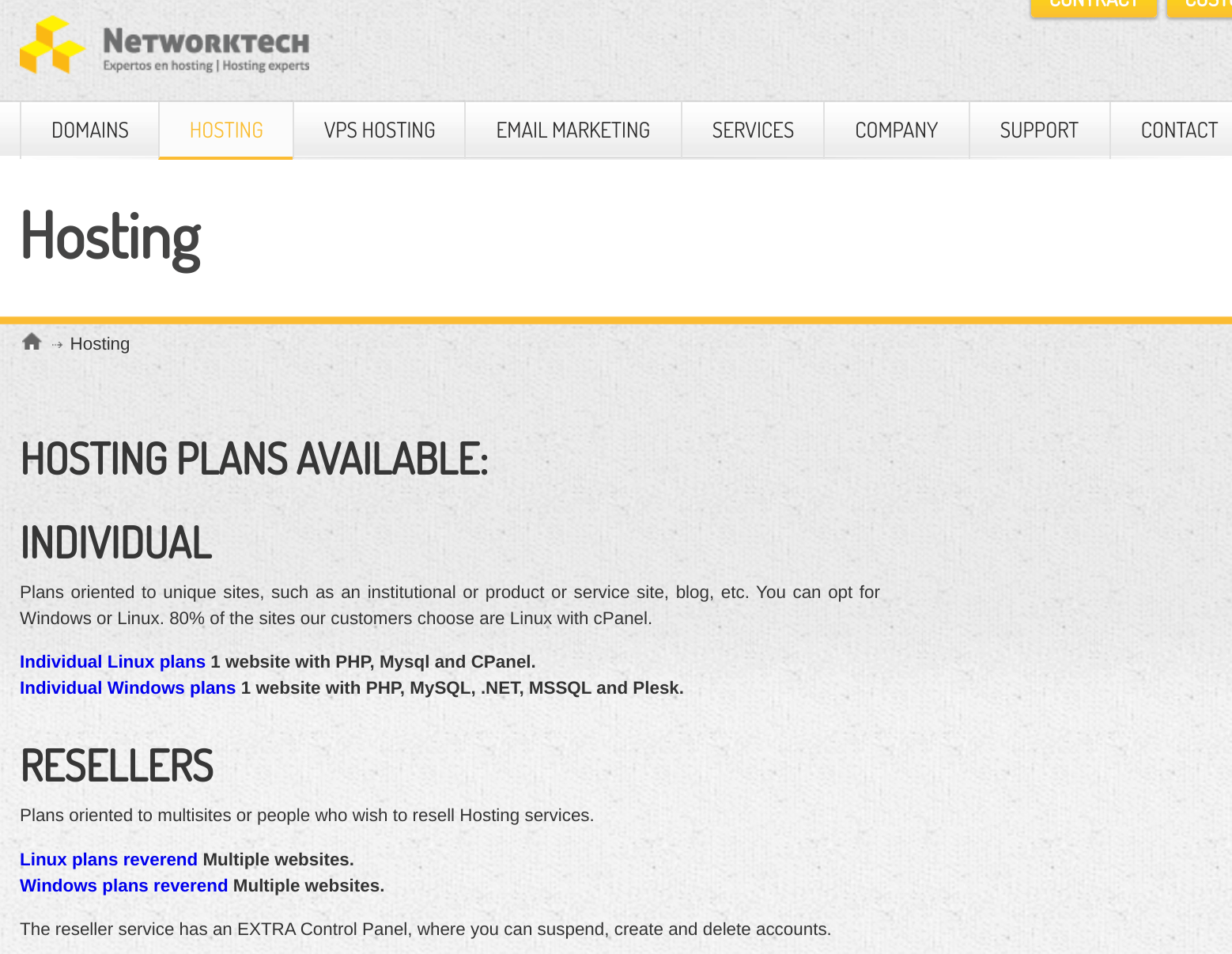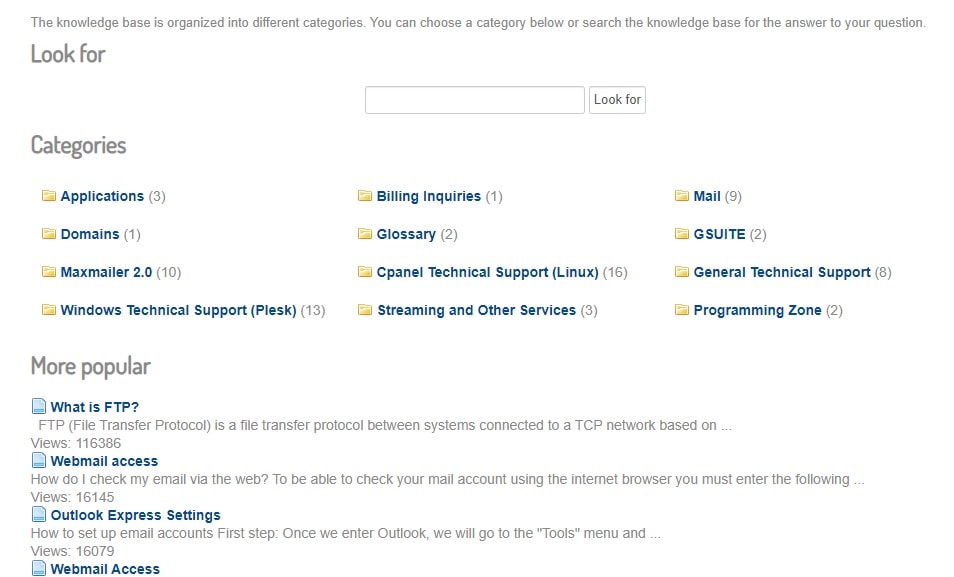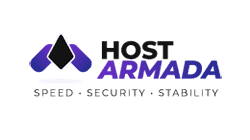Buenos Aires-based Networktech was founded in October 2004, and it got its own infrastructure in 2005. In 2009, it moved to a Tier 3 data center, and by 2015, 90% of its infrastructure was virtualized at two additional data centers. Networktech’s website supports the Spanish language.
Features and Ease of Use

Networktech offers six shared hosting plans (three Linux and three Windows), six reseller hosting plans (three of each), 11 cloud VPS plans (of various kinds), and three SHOUTcast streaming services.
The three Linux shared hosting plans provide you with:
- 10 GB to 40 GB disk space
- 30 GB to 150 GB monthly transfer
- 60 to unlimited email accounts
- 2 to 6 MySQL databases
- Support for MySQL, PHP, CGI, JavaScript, Perl, and HTML
- Free SSL
- Regular backups
- Anti-spam
The hosting plans are compatible with CMS software such as WordPress, Joomla, and Moodle. And the Softaculous “Application Pack” lets you install additional apps, including Drupal, PrestaShop, AbanteCart, TYPO3, and EasyPoll. You can purchase a “Premium Pack” for 320 installable applications.
Since Networktech operates a DNS with multi-datacenter redundancy, it can redirect traffic to an entirely different data center in the case of component failure. And RAID does a similar thing for data storage. It’s all the more surprising, then, that SLA-backed 99.8% uptime is lower than the industry average.
Besides shared hosting, you can rent a VPS (with full root access for complete server control) or a SHOUTcast streaming service (to host your own radio station).
Pricing and Support

Networktech’s shared hosting plans are priced competitively, with a 40%-off promotion at the time of writing this review.
You can pay for shared hosting plans in Argentine pesos, Chilean pesos, or U.S. dollars via PayPal, Banco Credicoop, Mercado Pago, Rapipago, DineroMail, or a CuentaDigital account. They offer monthly and annual billing cycles, but I don’t see any money-back guarantee to make you feel better about signing up for more than a month.
The customer support team can be contacted 24/7 by submitting a support ticket, or during office hours via live chat, email, or online contact form. Unfortunately, live chat was not available when I wanted to try it, and my test ticket submission received no reply.
If you have to resort to self-support, you’ll find an acceptable (but not exceptional) knowledge base.










